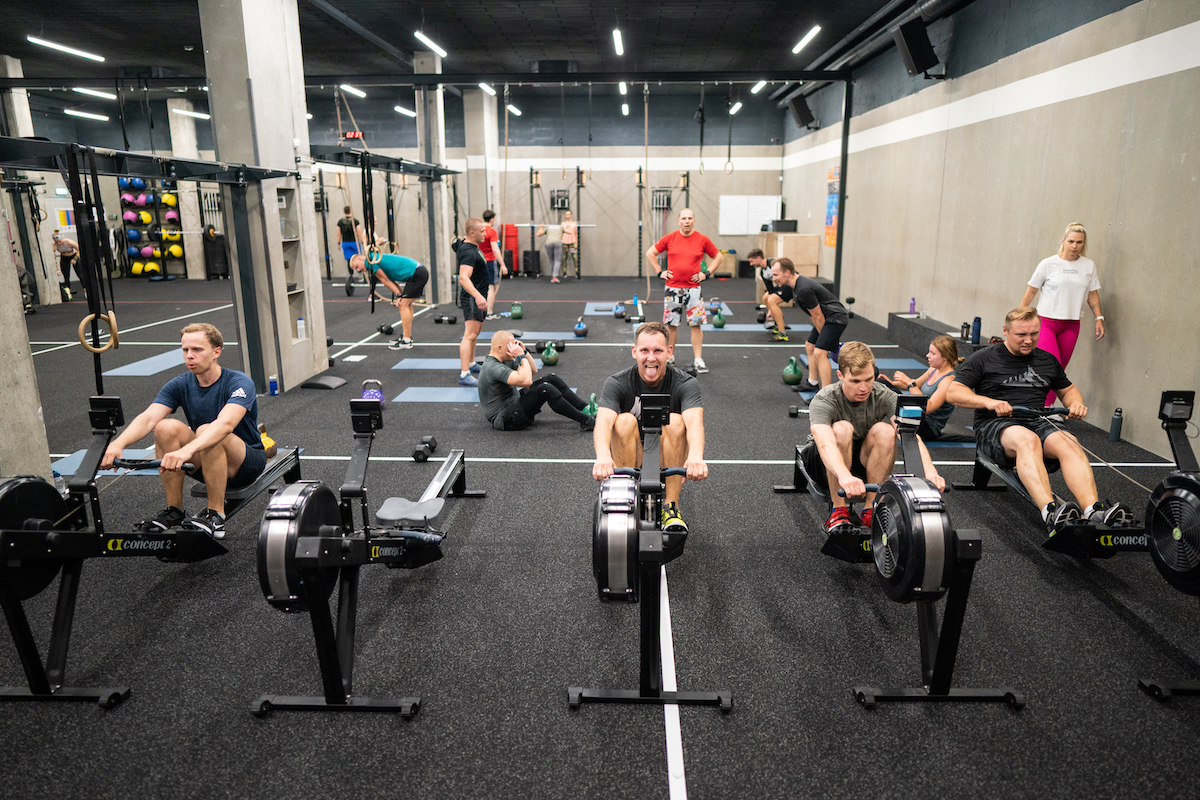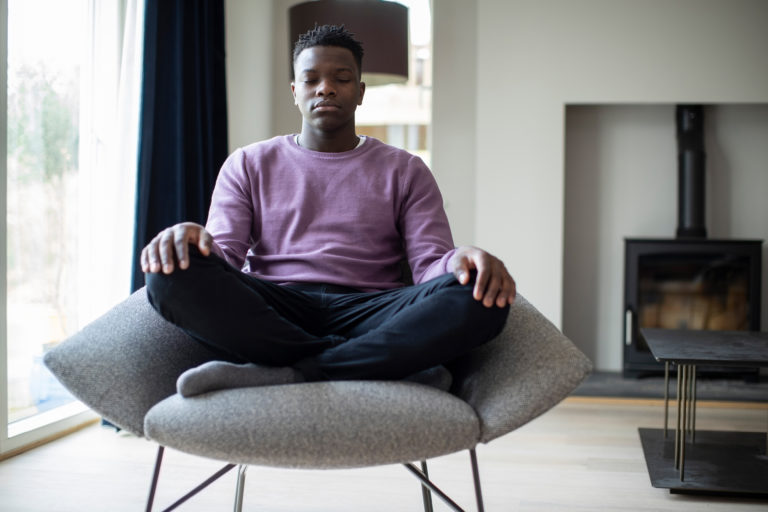In part 1 of this two-part series on stress, we discussed the differences between the sympathetic and parasympathetic branches of the nervous system, the importance of finding balance between the two, and how prolonged stress sends the sympathetic response into overdrive, resulting in chronic inflammation and illness.
Now we’re going to talk about how to regulate the stress response in real time as well as techniques for long-term stress management to bring the two systems back into balance.
The Physiological Sigh
The physiological sigh is a breath technique that reduces anxiety and heart rate by maximizing carbon dioxide expulsion. It consists of two inhalations through the nose followed by one long exhalation through the mouth.
Our lungs are filled with alveoli — small air sacs at the ends of the bronchioles — where oxygen and carbon dioxide are exchanged between the lungs and the bloodstream.
The double inhalation inflates the alveoli to max capacity, removing carbon dioxide more efficiently, while the long exhalation encourages the heart rate to slow, mitigating the physical feelings that come along with acute stress. You’ll notice children do this after a period of sobbing.
To perform the physiological sigh, take a deep breath in through your nose. At the top of that breath, take an additional breath, filling the lungs as much as possible, then exhale through your mouth as slowly as possible, for as long as you can. Repeat one to three times.
Box Breathing
Like the physiological sigh, box breathing also manipulates carbon dioxide levels in the bloodstream to manage stress. This technique, however, works by allowing it to build up.
Named for the four sides of a box, box breathing consists of four stages of four counts each:
1 – Inhale through the nose while mentally counting to four.
2 – Hold your breath for another four-count.
3 – Exhale through the mouth for a count of four.
4 – Hold your breath for a final four count. Repeat two or three times.
The breath-holding allows carbon dioxide to build in the blood, which in turn activates the parasympathetic — the rest and digest — branch of the nervous system, resulting in a sense of calm.

Nutrition
We know that an optimally functioning system is dependent on raw materials from food. Putting the right fuel in our bodies results in better sleep, less fatigue, improved mood, and overall health — which puts us in a much better position to handle stressors.
Look for nutrient-dense whole foods and minimally processed fats and carbs. In other words: Eat meat, vegetables, nuts and seeds, some starch, little fruit, and no sugar.
Cold Therapy
An ice-cold shower sounds stressful, right? That’s the point!
Cold therapy is an example of hormesis, or when a mild stressor triggers a beneficial response. In this case, exposure to cold triggers the release of noradrenaline and dopamine in the brain, promoting a sense of calm alertness.
Practicing cold therapy regularly also builds resilience under controlled circumstances, better equipping us to deal with larger stressors in the future.
Sleep

Quality sleep in the right quantity is critical to overall health as well as stress management. In fact, chronic sleep deprivation itself acts as a stressor to the body, resulting in increased production of cortisol and adrenaline while putting the sympathetic nervous system in hyperdrive.
Good sleep with adequate amounts of REM and deep sleep cycles will keep the nervous system in balance and reduce anxiety.
To aid good sleep:
- Get some light soon after you wake, ideally from the sun (or a light-therapy lamp).
- Limit caffeine to the first half of the day and from an hour after waking.
- Exposure to blue light delays the rise of melatonin, a sleep-signaling hormone. Turn on the red filter on your phone and computer after sunset to reduce exposure to blue light. Even better: Put your phone down altogether and you’ll limit the stimulation of cortisol and adrenaline from late-night emails or FOMO-inducing Instagram posts.
- Avoid alcohol before bed. Though its sedative effects may help you fall asleep more quickly, it impedes breathing and disrupts REM sleep, leaving you more anxious the next day than you were to begin with.
Meditation
This much-misunderstood technique is a top-down method of addressing stress. It can be used to build resilience in stressful moments as well as alleviate symptoms of stress in real time.
You don’t have to sit on the floor and chant or try to empty your mind, as popular culture might have you believe. Begin by sitting or lying in a comfortable position and simply notice how your body is experiencing stress: “My stomach is churning,” or “My throat feels tight.”
Merely identifying what your body is feeling and labeling it can be enough to break the cycle and help ease the stress response.
Movement
Exercise is another example of a hormetic stressor — those stressors that actually have beneficial effects.
While an acute stressor in the moment, exercise reduces levels of adrenaline and cortisol while promoting endorphin production. And in the long term, exercise protects the body from the harmful effects of chronic stress and inflammation while priming our adaptation to the stress response.
We all have days when we don’t feel capable of attending a class or going for a run after a taxing day. On those days, even 15-20 minutes of moving is beneficial. Walk up and down the stairs if that’s all you’ve got to give.

Connection
Humans are social animals, and the increasingly isolated world we live in — brimming though it may be with digital connection, a stressor in itself — promotes a constant state of underlying stress.
Lack of meaningful social connection has even been demonstrated to be an increased risk of early mortality.
What can we do to feel more connected? Do something for someone else!
This is the fastest way to get out of a funk. Send a thank-you note, donate some old clothes to a charity shop, smile at a stranger. Even connecting with a pet or with nature can be enough to decompress and destress.
* * *
We have established that the acute stress response brings with it a host of benefits. It’s when the stimulation of our sympathetic nervous system becomes chronic that things start to suffer.
But the good news is that we have the power to prevent and reverse those effects with the actions of our daily lives.
What will you choose to do?
About the Author: Dr. Rini Chatterjee (she/her) is a general practitioner with more than 20 years of experience working in the National Health Service in the United Kingdom. She has post-graduate qualifications in diabetic health and a special interest in optimizing metabolic function. Dr. Chatterjee has appeared numerous times on U.K. radio and TV speaking on a range of medical topics but always advocating for health to be considered in the most holistic way possible. Her approach to practice always starts with what she considers to be the foundations of health: nutrition, movement, sleep, and connection. She is an active member of her own CrossFit community and has been a CrossFit athlete for nine years. She obtained her CrossFit Level 1 Certificate at the CrossFIt Home Office in 2019. Follow her at @resilience_health.

De-stress and Decompress: Managing the Stress Response